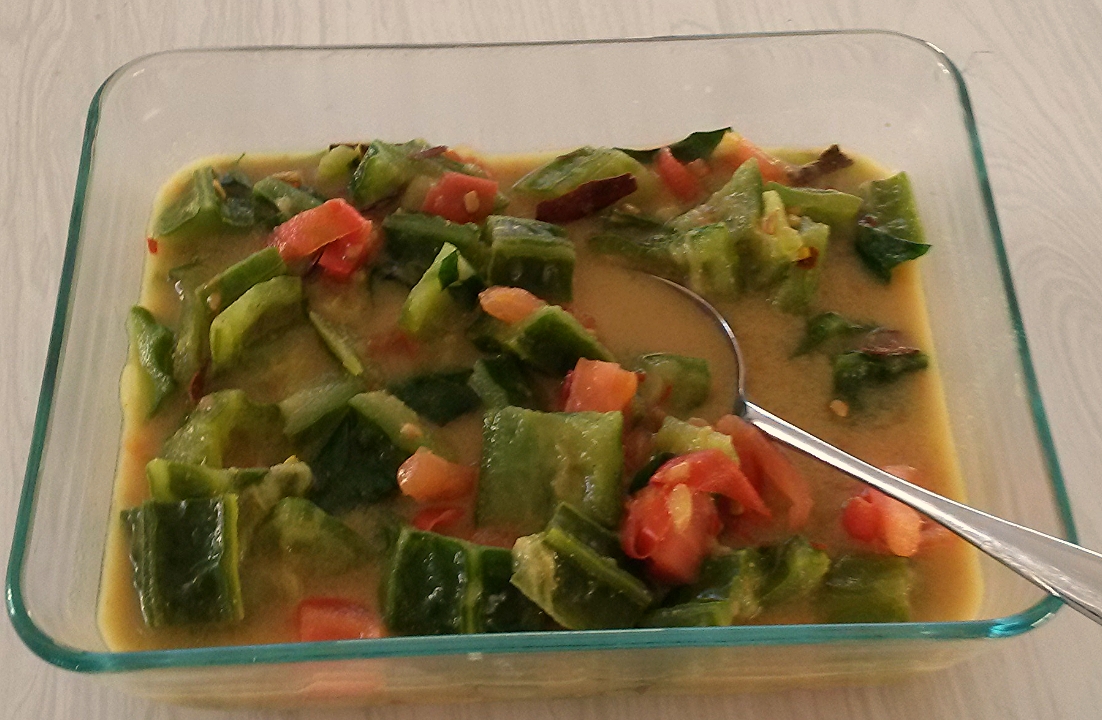South Asia to me includes India and Sri Lanka... two nations where vegetarian dishes are the norm rather than the occasional. Meat and fish tends to be an occasional dish in the south of asia, not always because the people are "vegetarian" (though there are a high number of vegetarians) but because of a lack of availability and cost.
Vegetarians in south asia tend to be lacto- vegetarians, there are not usually any vegans. However many dishes are naturally vegan, or require only a minor tweak to be vegan. If you can cook south asian cuisine, there is no reason to ever run out of ideas for vegetarian or even vegan dishes.
My best tip when making a curry is to add spices until the dish smells right, and then add salt until it tastes right! ...of course it helps if you know what the dish is supposed to smell like and taste like to cook in this manner.
In general south asian food is best eaten with your hands... allowing you to break apart breads, and mix curries into rice before having a mouthful.
Sri Lankan Recipes:
I would describe Sri Lankan flavours as half-way between Thai and Indian. The Sri Lankans tend to use just as much coconut milk as the Thais, and not quite as much quantity of spice as the Indians. But don't misunderstand... Sri Lankan cooking is still very different from either of these, and they definitely use just as much chilli.Sri Lankan recipes have had input from the Indians, the Malays, the Moors even the Chinese in Ancient times... more recently there has been input from the Portuguese, the Dutch and the British.
A Sri Lankan meal usually consists of rice, with a number of curries and side-dishes. A poor family may eat only rice and lentil curry for a meal; whereas a special event may call for ten different curries to be laid out in buffet style as well as sides such as papadams, salads, chutneys and sambals. Rice is so much the staple food that the phrase for asking if you have had a meal in sinhalese is literally "Have you eaten rice?"
Occasionally, the rice may be replaced by hoppers, string-hoppers or Indian imports such as idli or roti.
The Essentials:
-as usual, I have listed the ingredients from most essential to least essential
ground cummin (note that Indian recipes often use whole seeds, so a small coffee grinder may allow you to grind your own from seeds, and therefore use for both Indian and Sri Lankan recipes)
ground coriander
cinnamon sticks
fenugreek seeds
coconut milk - this can be bought in the powder form and reconstituted as required, but the liquid form is easier to use
desiccated (shredded) coconut
curry leaves - fresh leaves are always better, or even a plant/tree in your garden, but good quality dried leaves are a last resort.
ground turmeric
-------------------These first 8 ingredients I would consider to be the most important--------------
paprika
ground fennel
cardamom pods
chilli powder and or dried red chilli flakes. - if you don't already use chilli powder, you are unlikely to start suddenly.
cloves
whole black peppercorns
tamarind - the concentrate paste is the easiest to use
black mustard seeds
rampe or pandanus leaves
--The next 9 ingredients are not essential, they do improve the depth of flavour of many dishes, and may be required for some dishes--
Red rice with 3 veg
Red rice is very common in Sri Lanka, and can be found now in most larger Indian/Sri Lankan grocery stores. A meal such as this would usually require some papadum to provide a crunch and a chutney or sambal to balance the flavours with some sourness.
Red rice is more nutritious than white rice, but can have a fibrous texture, so in the beginning you may need to mix it with white rice.
Be careful to select a good brand, as many brands will have stones in amongst the grains
Basmati Rice with 3 veg
This meal is already quite balanced with the broccoli and cauliflower stir-fry adding some crunch, but again would be best enjoyed with a pickle or chutney to add some sourness.
Basmati rice is already well-known for its low glycaemic index and is readily available. The other components of this meal provide a high protein intake - TVP (textured vegetable protein) which is usually made from soy flour, the combination of rice and lentils. In combination this is a high protein, high fibre, low fat, highly nutritious meal.
Basmati rice with 3 veg
This plate combines lentil curry, a kankung stir-fry and tempered oyster mushrooms around a serve of basmati rice.
The teaspoon-full of mango chutney at 5o'clock balances the meal.
Indian Recipes:
India is a patchwork of many smaller "nations", each with their own culture and recipes. The most popular recipes have often spread throughout India, but you could never say that north indian cooking is similar to south indian.An ideal meal is usually based around rice, with a number of highly spiced curries. Indian breads such as chapati, paratha or naan are sometimes served as a side to the rice based meal, or served separately as.
As usual I have listed the essential ingredients from most essential to least essential.
Essentials:
Cummin seeds
coriander seeds
mustard seeds
whole black peppercorns
besan (chickpea flour)
cardamom (pods)
cinnamon sticks and powder
chilli powder
cloves
fennel seeds
fenugreek seeds
garam masala
turmeric
asafoetida
ghee
nutmeg
saffron
